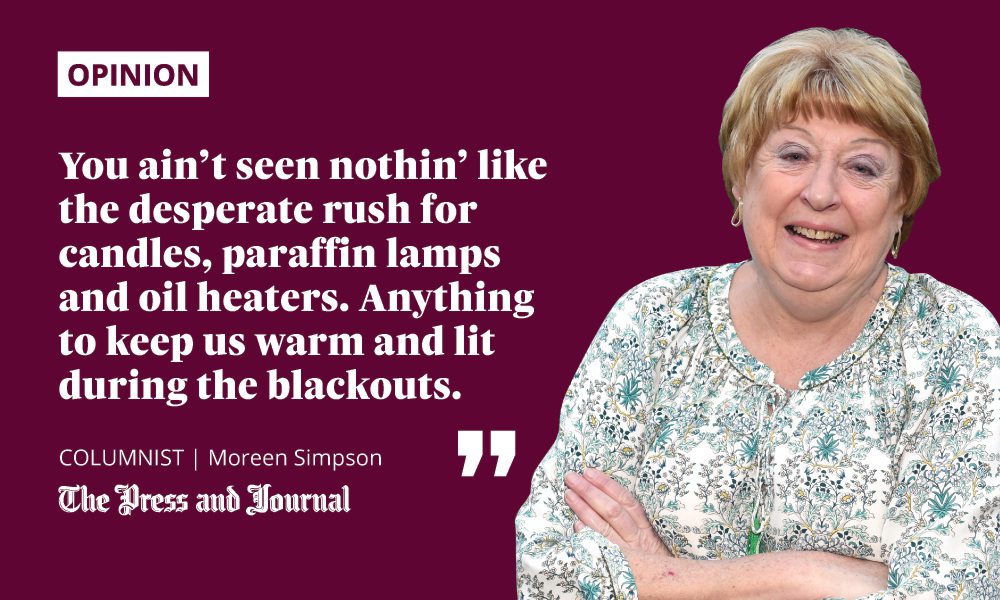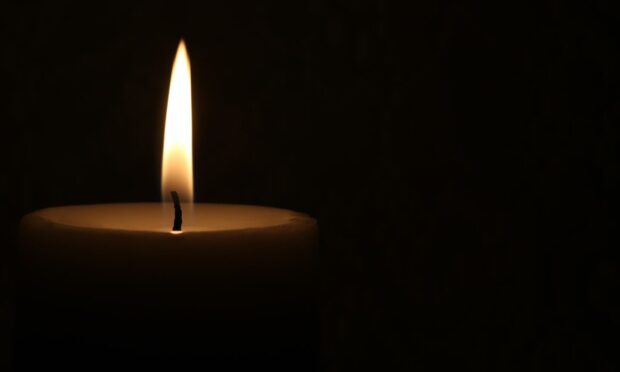Are you in a petrol panic? I am – and I dinna even hae a car!
Just as well because Sister Stress here would probably be tourin’ aboot fae Cults to Clatt on the hunt for a tiny top-up.

Fit a funk I was in 21 years ago when truckers and farmers blockaded refineries in protest at Prime Minister Tony Blair’s fuel duty hike. With the soaring cost of oil, it looked like the price of a gallon might rocket to – wait for it – £4.
With no petrol getting to the pumps, motorists were rationed to a pucklie gallons each, but one-by-one the filling stations ran dry. A scary feeling, until Blair ordered the army to drive the tankers through the barricades.
Lights out for the Three-Day Week
Worst of all was the fuel crisis in 1974 – not petrol, but electricity. In the face of galloping inflation, miners boycotted overtime in their bid for a 35% pay rise. Most of our electricity came from coal-fired stations, so in December 1973, PM Edward Heath announced his draconian, power-saving plan: a three-day working week from the New Year.
The nation was as stunned as when Boris Johnson announced lockdown in March last year. Only hospitals, supermarkets and newspapers could work the full week. We also had to endure regular neighbourhood evening blackouts; periods of, as I remember, five hours when the electricity went off in scheduled parts of the area.
Like all local papers, the Evening Express printed the daily rota of cuts, so everyone knew when they’d be plunged into darkness.
To begin with, it really was a terrifying time, with no way of knowing how long it would last, Heath desperate to win the face-off with the bitterly determined miners’ leaders. All this during the freezing months of January and February.
Life in a siege situation
If you folk who didn’t live through it think we’ve got shortages and panic buying now, you ain’t seen nothin’ like the desperate rush for candles, paraffin lamps and oil heaters. Anything to keep us warm and lit during the blackouts.
To add an extra frisson of personal stress to the story, I was due to get married in just a few weeks – April 8. Mummy-daddy, still-ma-breestie. Could we or couldn’t we? Would King’s College Chapel be on the rota for power that afternoon? Ditto the hotel, the dear old Amatola? The guests literally didna ken if they were comin’ or goin’.
Strange as it may seem, we gradually got used to life in this siege situation. Knowing when our flat was going to be cut off meant we could move to somewhere which had heat and light; usually a pub or hotel outwith the blackout area. We’d eat, drink and enjoy the comfort until we knew we’d be switched on again back home.
I dread to think how young families or old folk who had to stay put coped. A general election called for in February resulted in a hung parliament.
Eventually Labour’s Harold Wilson took over a minority government and the miners got their 35%. But, holy moly, how near those power cuts got to my wedding – they didn’t end until March 8.


